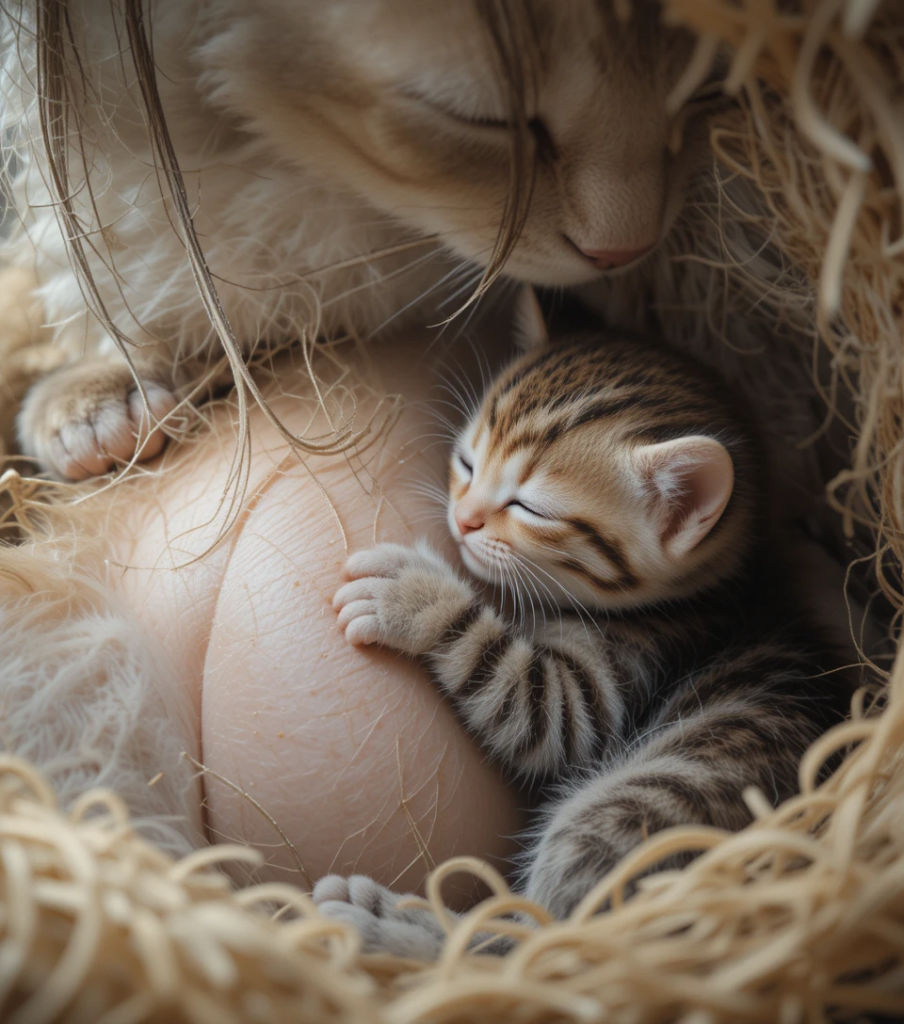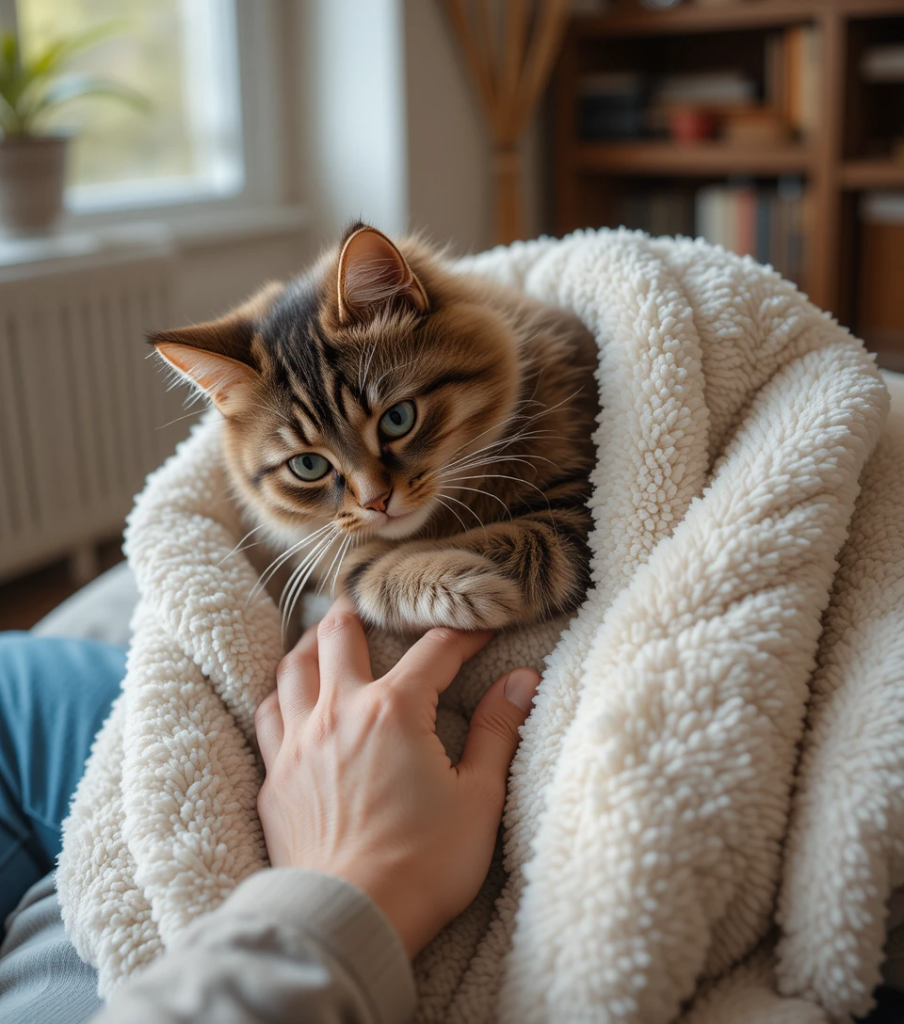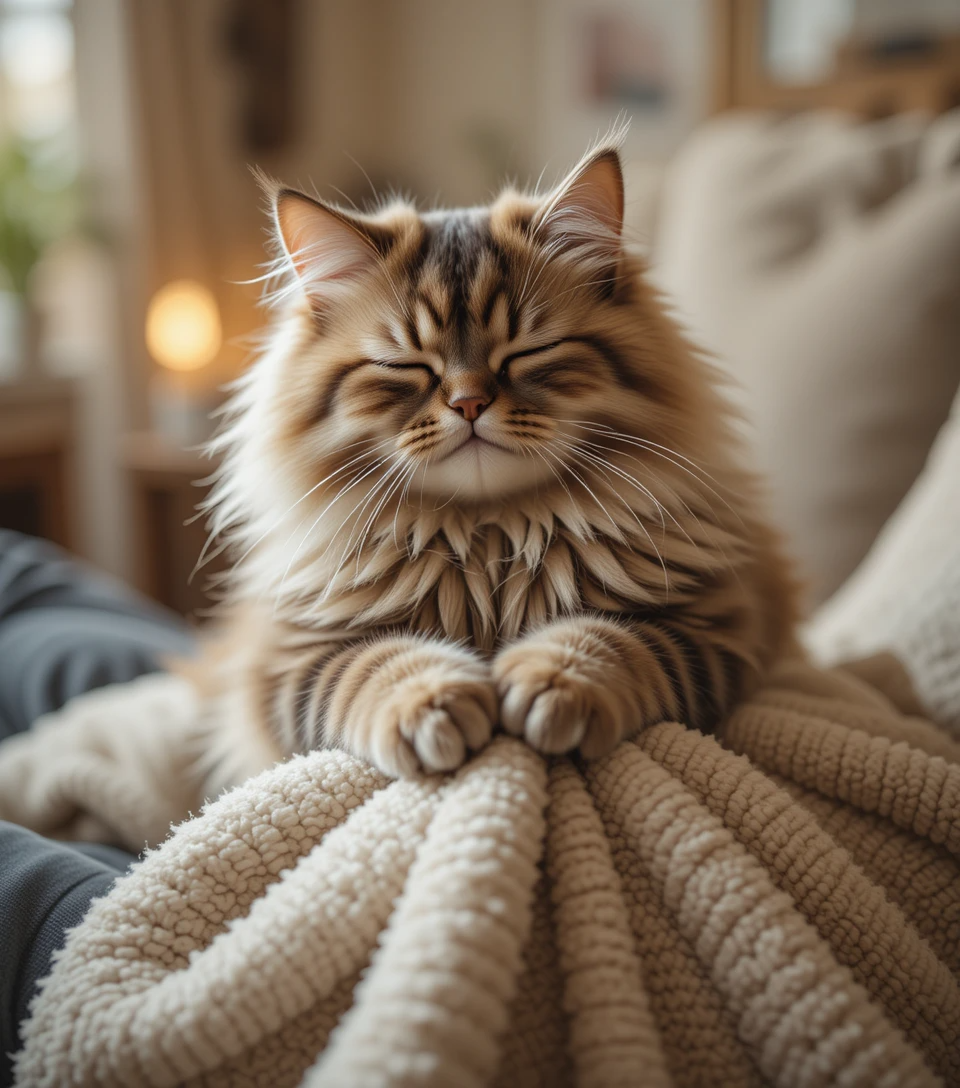Introduction
If you’ve ever felt your cat rhythmically pressing its paws into your lap, you might have wondered: Why do cats make biscuits on me? This adorable yet curious behavior, known as kneading, is deeply rooted in feline instincts. Whether your cat is expressing love, marking its territory, or simply seeking comfort, kneading is a unique and fascinating aspect of cat behavior. In this article, we’ll explore why cats knead, what it means, and how you can respond to it.
What Does “Making Biscuits” Mean?
“Making biscuits” is a popular term for kneading, the rhythmic pushing of a cat’s paws against a soft surface, such as your lap, a blanket, or a pillow. The movement resembles kneading dough, which is how the term originated. Some cats knead with their claws extended, while others keep them retracted. This behavior is natural and often associated with comfort and affection.
The Science Behind Cat Kneading

Kneading behavior starts in kittenhood. When nursing, kittens instinctively knead their mother’s belly to stimulate milk flow. This comforting action carries into adulthood, even when nursing is no longer necessary. The act of kneading releases endorphins, making it a self-soothing behavior that helps cats feel safe and relaxed.
Reasons Why Cats Knead Their Owners
While kneading may appear random, there are several key reasons why your cat may be making biscuits on you:
1. Affection & Bonding
Cats knead their favorite humans as a sign of love and trust. If your cat kneads on you, consider it a compliment! It means they feel safe and happy in your presence.
2. Marking Territory
A cat’s paws contain scent glands that release pheromones. By kneading on you, your cat is marking you as their own, reinforcing their bond with you and signaling ownership.
3. Seeking Comfort
Kneading is a self-soothing behavior that helps cats relax. You might notice your cat kneading before curling up for a nap, as it mimics the comforting sensations of kittenhood.
4. Instinctual Nesting Behavior
Wild cats knead grass or soft surfaces to create a cozy sleeping spot. Domesticated cats retain this instinct, even if they are simply preparing your lap as their nap zone.
Is Kneading Always a Sign of Happiness?
While kneading is generally associated with positive emotions, it can sometimes indicate stress or anxiety. If your cat kneads excessively, claws aggressively, or seems restless, they might be experiencing stress. Consider checking their environment for any potential stressors, such as loud noises or new pets in the home.
How to Respond When Your Cat Makes Biscuits

While kneading is adorable, it can be uncomfortable if your cat’s claws dig into your skin. Here are some ways to manage the behavior while keeping both you and your cat happy:
- Use a Blanket or Towel: Place a soft blanket on your lap to create a comfortable barrier.
- Trim Their Claws: Keeping your cat’s nails trimmed can reduce discomfort.
- Encourage Kneading on a Soft Surface: Offer a cozy pillow or blanket for them to knead instead.
- Avoid Discouraging the Behavior: Kneading is a natural instinct; instead of stopping it, redirect it to a more suitable surface.
When to Be Concerned About Kneading Behavior
Most kneading is harmless, but in rare cases, it may signal underlying issues. If your cat exhibits excessive kneading, signs of anxiety, or unusual aggression while kneading, consider consulting a vet or feline behaviorist.
FAQs
1. Why does my cat make biscuits on me and not others?
Your cat likely chooses you because they feel a strong bond and trust with you. Cats often knead their favorite humans.
2. Is cat kneading a sign of love?
Yes! Kneading is a way for cats to show affection and comfort.
3. Why does my cat purr while making biscuits?
Purring and kneading together indicate extreme contentment and relaxation.
4. Do all cats knead, or is it a special behavior?
Most cats knead, but some do it more frequently than others. It depends on their personality and upbringing.
5. Can I train my cat to stop kneading?
Instead of stopping the behavior, redirect it by offering a soft blanket or pillow for kneading.
6. Is excessive kneading a sign of stress?
In some cases, yes. If your cat kneads excessively and seems restless, assess their environment for stressors.
7. Why do some cats use their claws while kneading?
Some cats extend their claws instinctively. Regular nail trims can help minimize discomfort.
8. Does kneading mean my cat sees me as its mother?
Possibly! Kneading is a behavior linked to kittenhood, so your cat may associate you with comfort and security.
9. Should I stop my cat from making biscuits on me?
Unless it’s causing discomfort, there’s no need to stop kneading. Instead, use protective measures like a blanket.
10. Why does my cat drool while kneading?
Drooling can be a sign of deep relaxation, similar to how some cats purr when they are extremely happy.
Conclusion
Kneading is a natural and endearing behavior that reflects a cat’s deep-rooted instincts, love, and comfort. While it may sometimes be a bit painful due to sharp claws, it’s ultimately a sign that your cat feels safe and happy with you. By understanding why your feline friend makes biscuits, you can appreciate this adorable display of affection even more!

